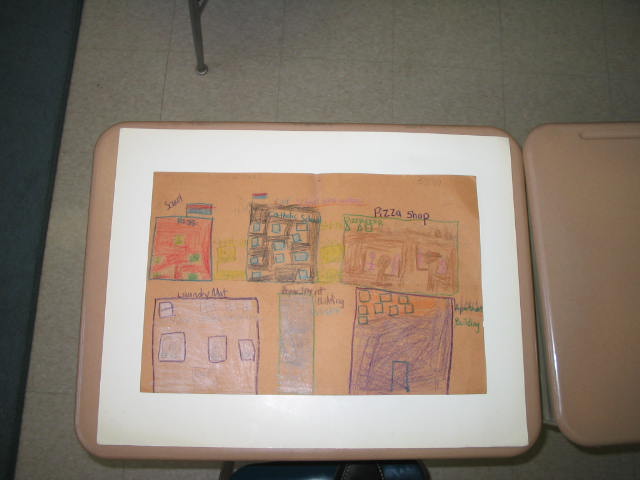Our Little Town
| Name: |
Sauda Johnson |
| School: |
P.S. 35X |
| Address: |
261 East 163rd Street |
| City: |
Bronx, NY, 10451 |
| Original Project: |
Our Little Town |
| Author: |
Phyllis Sicuranza |
| URL: |
http://teachersnetwork.org/teachnet-lab/ps88/ps88/phyllis/index.htm |
How did you modify this unit for use in your own classroom?: In order to build background knowledge, and integrate vocabulary, students created and narrated "My Urban Community" books. Maps were created using Microsoft Office drawing tools, instead of the SimTown software. The map-making activity focused on places in the community which were located around the immediate school vicinity.
List your primary instructional objectives for your students.
| |
Students were able to: - Understand what made their community an urban community. |
| |
Create and narrate books featuring the dwellings and locations where people in their community live, eat, and shop. |
| |
Utilize prior knowledge to create hand-drawn maps of their school vicinity. |
| |
Use digital photography to assist them in the creation of computer-generated maps. |
What role did technology play in this curriculum unit?: - Used digital and 35mm disposable cameras to photograph their community. - Narrated their community books on a video camcorder. - Used Microsoft drawing tools to create computer-generated maps.
How did you assess and evaluate student performance?: - The students were required to use graphic organizers, texts, and maps to identify, communicate, and illustrate elements and features of their community.
Please tell us briefly about your background & teaching experience: I am in my sixth year of teaching. I have taught both second grade, and third grade students. I have served as a reading intervention teacher, and as a writing instruction cluster teacher.
What are your recommendations for other teachers interested in adapting this unit?: Have students use logs to record and describe the locations in their photographs. In addition to the photographs, the log helps them to better recall the features and details of their community.
Samples of Student Projects
| |
Students created a My Urban Community Book. They identified places in the community where they live, eat, and shop. A slide show was created. |
| |
 |
| |
MyUrbanCommunity_MsJohnsonTeachNet.wmv |
| |
|
| |
 |
| |
MyUrbanCommunity_MsJohnsonTeachNet.mov |
| |
Students drew a map of the neighborhood around their school. |
| |
 |
| |
|
| |
Students created a map of the neighborhood around their school using Microsoft drawing tools |
| |
 |
| |
Johnson2.pdf |
| |
|
| |
 |
| |
Johnson3.pdf |
| |
|
|